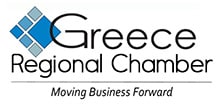WASHINGTON (AP) — President Joe Biden is eager to take full political ownership of the U.S. economy — a reflection of the White House belief that inflation is fading, job growth is solid and voters need to know about it.
But polling has consistently shown the economy to be a weak spot for Biden’s reelection hopes. Just 33% approve of his leadership on the issue, according to a May survey by the Associated Press-NORC Center for Public Affairs.
For much of his presidency, Biden has blamed high gasoline prices, painfully rising food costs and other cost-of-living expenses on the pandemic and the war in Ukraine. He said those two factors were beyond his control as inflation hit a 40-year high last summer and crushed the his approval ratings.
In a Chicago speech on Wednesday, Biden will begin a new effort to actively convince a worried public that the U.S. economy is not heading for recession but actually thriving because of his leadership. For him, there’s a happy confluence of the coming 2024 reelection campaign and a favorable turn in recent economic data, leading the White House to believe that public messaging about “Bidenomics” will help to rally Democratic voters going into next year.
The message is not a new one, though the White House believes it bears repeating so that it soaks in. White House press secretary Karine Jean-Pierre said at Monday’s news briefing that the president’s upcoming remarks would be a “cornerstone” speech and part of a larger administration-wide effort.
“It’s a vision about growing the economy from the middle out and the bottom up — you hear us say that over and over again, because we believe that trickle-down economics does not work,” Jean-Pierre said. “We have the data to prove it.”
Indeed, the rate of inflation has fallen over the past year while the job market has remained solid, a combination that seemed unlikely to many economic analysts who expected efforts to bring down inflation would cause layoffs and a recession. Goldman Sachs has put the odds of a recession in the next 12 months at 25%, down from its previous estimate of 35%.
Consumer prices rose at an annual pace of 4% in May, down from 9.1% last June. That’s still higher than the Federal Reserve’s 2% target, indicating that inflation remains a challenge. But employers added a robust 339,000 jobs last month in a sign that the economy appears poised to keep growing. And the inflation-adjusted annual increase in what people earn each hour turned positive in May, one of the main indicators that White House officials had been looking at for proof the economy was helping workers.
Biden’s GOP rivals have said that the president has broken the U.S. economy. They’ve tip-toed around the healthy 3.7% unemployment rate and focused instead on prices at the gas pump, grocery bills, the debt tied to Biden’s $1.9 trillion in pandemic relief and the administration’s focus on shifting away from fossil fuels in order to combat climate change.
“I will stop Joe Biden’s inflation nightmare, save the U.S. economy,” said former President Donald Trump, the Republican frontrunner, in a speech to evangelical Christians last weekend.
“You would think that with these economic problems with inflation, you may want to tap into more domestic energy,” Florida Gov. Ron DeSantis said in an Iowa speech. “But no, Biden is deliberately trying to kneecap our energy production and he’s trying to force Americans into electric vehicles, which will make us more reliant on China, who provides most of the materials for the batteries.”
Part of Biden’s challenge is that confidence in his economic leadership has waned. In March 2021 just after his round of pandemic relief became law, 60% of U.S. adults approved of how the president was handling the economy, according to an AP-NORC Center for Public Affairs poll. Since then, that figure has essentially halved.
Still, there are signs that people’s views of the economy are improving. The University of Michigan’s survey of consumer sentiment showed that Democrats, Republicans and unaffiliated voters generally feel better about the current state of the economy than they did a year ago. But confidence among Democrats is still weaker than it was during Biden’s first year.
The administration released a memo ahead of Biden’s Wednesday speech that made the point that his policy ideas are broadly supported in polls, leaving unsaid that those proposals generally fare better than the president himself does.
Biden aides see ‘Bidenomics’ as an expansive framing to a host of the president’s policies for easy public consumption, tying together a diverse set of initiatives meant to boost the nation’s global competitiveness with programs meant to strengthen the middle class at home.
The president is betting that targeted government investments can catapult the economy forward and help workers. During his first two years when Democrats controlled the House, Biden followed up on his pandemic relief by pushing through a bipartisan infrastructure building bill, funding for computer chip plants and tax breaks to encourage the use of renewable energy.
This approach goes back to Biden’s own blue collar identity that surfaces in his speeches: the Scranton, Pennsylvania kid whose family at times just eked by financially.
But it can take several years to replace bridges and tunnels, to build new factories, to lay broadband cable for the internet and to make drivers comfortable with buying electric vehicles. Administration officials have privately acknowledged that there is a lag between the economy that the president is promising and what voters will likely see by the 2024 elections.
Biden in remarks in July 2021 had initially dismissed higher inflation as “transitory,” saying he was confident that the bout coming out of the pandemic was temporary. Those remarks became a point of attack among Republican lawmakers and some economists as inflation worsened after his statement.
Yet Biden has stressed that he provides an alternative to GOP policies that try to boost the economy mostly through tax cuts. He said Monday in announcing more than $40 billion to ensure high-speed internet for the entire country that his ideas are similar to the New Deal-era playbook used to combat the Great Depression nearly a century ago.
“What we are doing, as I said, is not unlike what Franklin Delano Roosevelt did when he brought electricity to nearly every American home and farm,” Biden said.
The question is whether voters think that Biden can deliver just as FDR did and whether elections work the same as they did back in 1936, when the Rural Electrification Act became law. Later that November, Roosevelt won more than 60% of the popular vote as he won a second term.
In today’s polarized era, Biden is unlikely to secure anywhere near that margin. But his message on Wednesday will likely be that his presidency has already begun to reshape the world’s largest economy for the better and voters should judge him on that record.
He previewed the takeaway he wants voters to hear at a fundraiser last week in California, even as polls indicate that much of the public still feels pessimistic about the direction of the U.S.
“We unleashed, I think,” he said, “a sense of expectation in America that we can do anything.”
Brought to you by www.srnnews.com





















